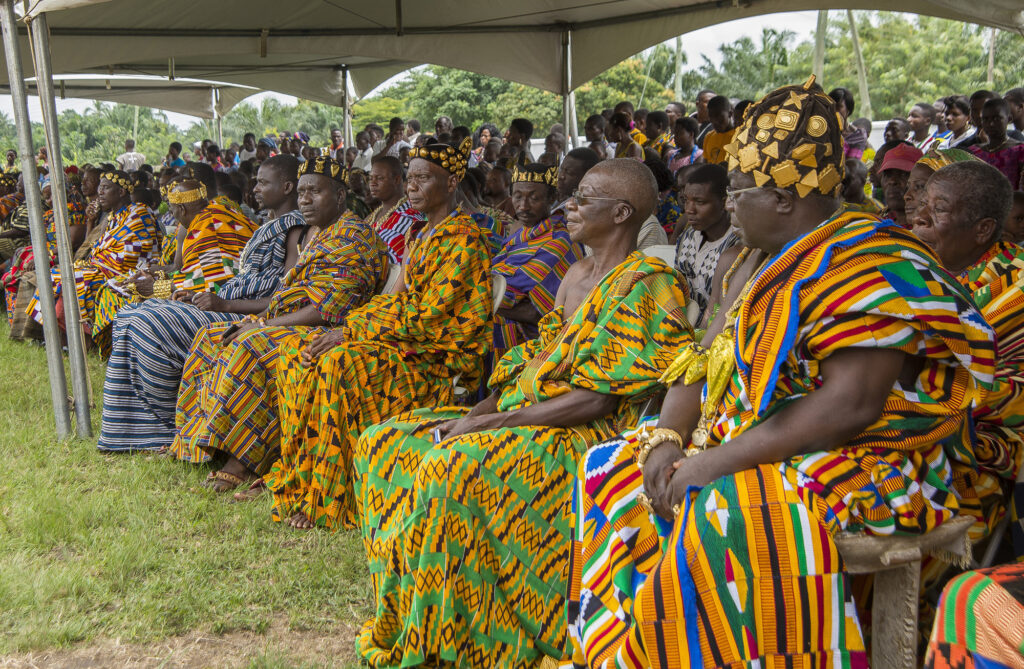By: Kekeli K. Blamey
In Ghana, the Ewe people hold a profound reverence for a textile that embodies their rich cultural heritage—Kente. This iconic fabric, celebrated for its vibrant colors and intricate patterns, has been a cornerstone of Ewe tradition for centuries. Delving into the origins, significance, and contributions of Kente to Ewe culture, ANC Empire Multimedia uncovers the fascinating story of a fabric that transcends mere aesthetics to symbolize identity, community, and heritage.
Origins: The Legendary Roots of Kente
The origins of Kente are steeped in legend, tracing back to two hunters who, inspired by the intricate web of a spider, wove the first Kente cloth. This myth underscores the ingenuity and creativity that have long defined Ewe craftsmanship. Historically, Kente’s creation is attributed to the Asante people in the 17th century, but its significance quickly spread to neighboring tribes, including the Ewe.
Significance: Weaving Identity and Community
Kente is far more than just fabric; it is a visual representation of Ewe philosophy, history, and values. Every color, pattern, and design element in Kente carries deep meaning, conveying messages about status, wisdom, and cultural affiliation. The fabric is often donned during ceremonies, festivals, and significant life events, serving as a tangible link to heritage and tradition.

Contribution to Ewe Culture: Preserving Tradition and Fostering Unity
Kente has been instrumental in preserving Ewe cultural identity, particularly during periods of colonization and cultural suppression. It has remained a powerful symbol of resistance, resilience, and community pride. Moreover, Kente has fostered unity among the Ewe people, transcending geographical and linguistic barriers to represent a shared heritage.
Kente’s significance goes beyond its visual appeal; it is a vibrant tapestry of Ewe tradition, identity, and community. As a cultural icon, it continues to inspire pride, unity, and creativity among the Ewe people.
Kente in Ewe and Togo Cultural Festivals
Kente plays a central role in promoting cultural festivals among the Ewe people and in Togo. The fabric is worn as traditional attire during festivals, showcasing its vibrant colors and intricate designs. Kente is also used to adorn ceremonial spaces, infusing cultural significance into the festivities.

Specific Kente designs and colors are often selected to convey messages about the festival’s theme, purpose, or significance. Additionally, Kente is presented as a gift to dignitaries, guests, or performers, symbolizing respect, appreciation, and cultural exchange. The fabric is also incorporated into traditional dances and performances, highlighting its beauty and cultural importance.
Notable Ewe cultural festivals where Kente is prominently featured include:
- Hogbetsotso Festival: Commemorating the Ewe migration to their current homeland, this festival is a celebration of cultural heritage.
- Asafotufiam Festival: This festival honors the ancestors and showcases the military prowess of the Ewe people.
- Gli Festival: Celebrated to promote unity and cultural heritage among Ewe communities.
By integrating Kente into these festivals, the Ewe people proudly showcase their cultural identity, traditions, and values, ensuring the continued relevance and significance of this iconic fabric.





